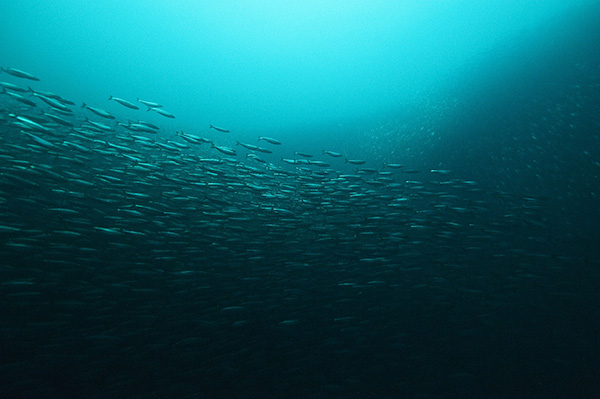How do species adapt to locations? Herring in Baltic Sea provide clues

An international team of scientists led by researchers from Texas A&M University and Uppsala University reports that a single amino acid change in the light-sensing rhodopsin protein played a critical role when herring adapted to the red-shifted light environment in the Baltic Sea.
The study, published today in the journal PNAS, reports that, remarkably, about one-third of all fish living in brackish or freshwater carry the same change.
The Atlantic and Baltic herring are excellent models for evolutionary studies for two reasons, according to Leif Andersson, a professor in the Texas A&M College of Veterinary Medicine & Biomedical Sciences’ Department of Veterinary Integrative Biosciences and Uppsala University, who led the study.
“Firstly, their enormous population sizes allow us to study the effects of natural selection without the disturbing stochastic changes in the frequency of gene variants that happens in small populations,” he said. “Secondly, the colonization of the brackish Baltic Sea by herring within the last 10,000 years—following the most recent glaciation—provides an opportunity to study what happens when a species adapts to a new environment.”
“We have examined the entire genome in many populations of Atlantic and Baltic herring and find that a single amino acid change in the protein rhodopsin, in which phenylalanine has been replaced by tyrosine, played a critical role during the adaptation to the Baltic Sea,” said Jason Hill, a scientist at Uppsala University and first author on the paper.
This makes a lot of sense, according to the researchers, since rhodopsin is a light-sensitive receptor in the retina and satellite data show that the Baltic Sea has a red-shifted light environment compared with the Atlantic Ocean, because dissolved organic material absorbs blue light.
“A careful genetic analysis of our data shows that the evolutionary process must have been very rapid. We estimate that the rhodopsin gene variant found in Baltic herring increased in frequency to become the most common variant within only a few hundred years,” said scientist Mats Pettersson, from Uppsala University.
More from the College of Veterinary Medicine & Biomedical Sciences

